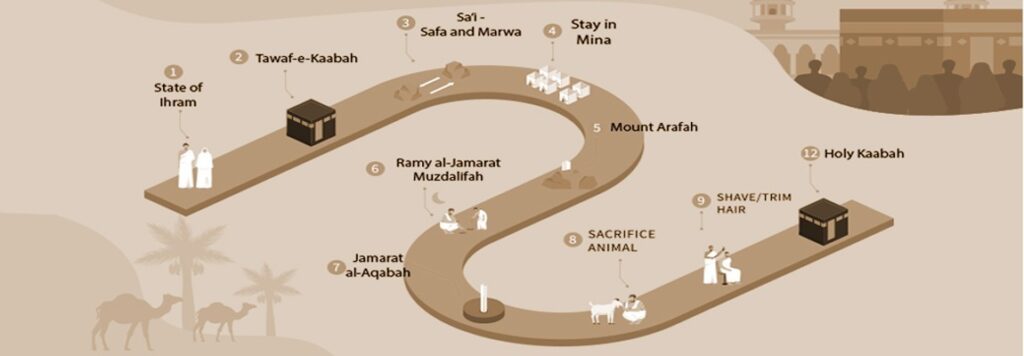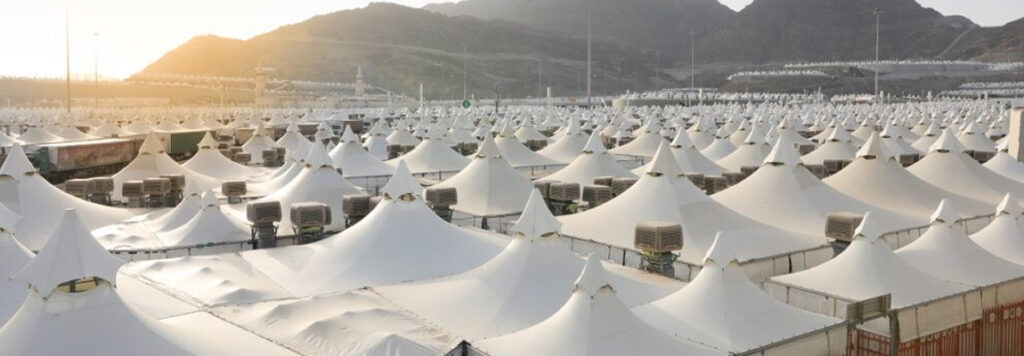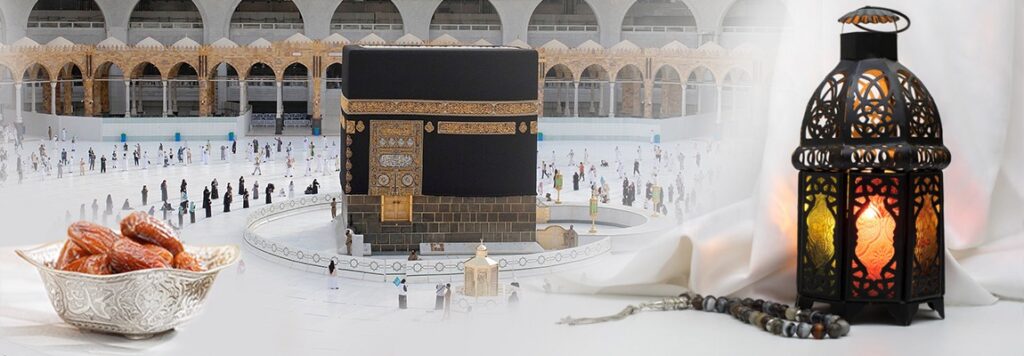In our divine religion (Islam), Hajj is the fifth and last pillar. Every Muslim who is sane, healthy and can afford Hajj must perform it once in a lifetime. It consists of a sequence of rituals that are performed in the 12th month (Zil Hajj) of the Islamic calendar in Makkah, Saudi Arabia. Rituals of Hajj are given as follows;
Ihram is the state in which pilgrims (after taking Ghusl) wear white outfit, that is, two-piece unstitched apparel for men and any loosely fitted outfit for women, which is recommended for her in Shariah.
During Ihram, Pilgrims must abstain themselves from arguing and fighting. They are not allowed to cut hair, clip nails, wearing socks or shoes (except sandal that expose the instep). Covering the head is strictly forbidden to men. Women should not use perfumed products. Engaging in Marital relations is also prohibited.
It is mandatory for a pilgrim to take on Ihram and to make an intention of performing Hajj. Pilgrims should recite Talbiyyah when intending to enter into state of Ihram.
Haram is the Holy Mosque, pilgrims puts forth their right foot first while entering in it and say supplication.
Pilgrims perform circumambulation (Tawaf) seven times around the Ka’abah (a sacred place in the middle of Haram) in a clock-wise direction. Each circumambulation (Tawaf) starts and ends at the black stone i.e. Hajr-e-Aswad (a cornerstone, which is at the southern corner of Ka’abah). If possible, pilgrim should approach to touch and kiss the Black stone, and if not, he/she can just make a sign with his right hand facing the black stone.
After completing seven circuits of Tawaf, pilgrims approaches Maqam-e-Ibrahim and pray two Rakats. During first Rakat, they should recite Surah Al-Kafiroon and Surah Al-Ikhlas should recite during the second one.
Sa’i is walking back and forth seven times between two small hills (i.e. Safa and Marwa). During Sa’i, pilgrims may recite Quran and recite supplications.
8th Zil Hajj is said to be the day of Tarwiyyah. The pilgrims call out Talbiyyah of Hajj on this day. They camp in Mina and offer Zohar, Asar, Maghrib, Isha and Fajr, shortening all prayers into two units without combining them.
When the sun rises on 9th Zil Hajj, all pilgrims goes to Mount Arafat reciting Talbiyyah. They stays there until the evening and prays Zil Hajj and Asar combined at Zohar time, making each one two units. The last sermon of Prophet Muhammad (peace and blessings be upon him) was delivered on Mount Arafat. In Arafat, pilgrims spend most of their time in prayer, repentance and seek for forgiveness of ALLAH.
From noon until dusk, pilgrims perform Wuquf. In Wuquf, they stand alone facing the Qibla and ask ALLAH for forgiveness and mercy. However, there is no precise rule of standing all the time, pilgrims can sit, talk and can eat too because fasting is not allowed on this day (for pilgrims). Prayers offered to ALLAH for forgiveness of sins. Pilgrims tries to make as many supplications as they can because the best of supplication is the supplication of Arafat day.
After the sunsets, pilgrims goes to Muzdalifah with tranquility. At Muzdalifah, pilgrims offer Maghrib and Isha prayer. It is permissible to combine Maghrib and Isha prayer. After prayer, they collect stones for “Ramy (stoning of the devil)”. Facing the Qibla, pilgrims should recite Takbeer, supplicate ALLAH and declare his oneness at Mehshar-ul-Haram. Mehshar-ul-Haram is a small hill in Muzdalifah. Pilgrims are allowed to take rest and sleep till Fajr. Before the sun has risen, they set off for Mina reciting the Talbiyyah.
After Fajr prayer of 10th Zil Hajj, pilgrims head back to Mina and perform Ramy. Reciting Takbeer, they throw seven small stones at Jamarat-ul-Aqabah.
Ramy should be end before the time of Zawal. After Ramy, pilgrims slaughter their sacrificial animal. After sacrifice, men (pilgrims) can shorten or shave their hair, whereas, women (pilgrims) can only cut a fingertip length of their hair. With that, pilgrims are allowed to end their Ihram completely. They bathes and wear new clothes.
Now, pilgrims goes to Makkah and make Tawal-ul-Ifadah, seven times around Ka’abah. Following Tawaf-ul-Ifadah, they do Sa’i in seven lengths. On the completion of Tawaf, everything is lawful for them which is prohibited in the state of Ihram.
11th, 12th and 13th Zil Hajj are said to be the days of Tashreeq. Pilgrims go back to Mina and stay there for Tashreeq days. They stones the three Jamarah, each one with seven stones, accompanied by Takbir.
Twaf Al-Wadaa is the farewell Tawaf of Ka’abah, it marks the end of Hajj. Sa’i does not perform in farewell tawaf. After Tawaf, pilgrims should leave the house of ALLAH by their left foot first and saying supplication.
The Hajj is completed. Now, pilgrims can leave Makkah for their next destination. For Complete Urdu videos regarding Rituals of Hajj, Click below:
Hajj Ka Tareeqa In Urdu Videos
Let Al-Khair be your partner of your Holy Journey with all of their experiences in serving the guests of Allah.






















